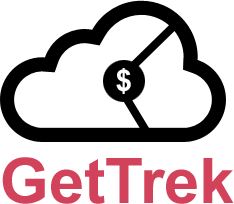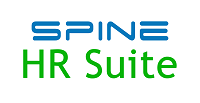Description

Payroo Payroll

ZingHR
Comprehensive Overview: Payroo Payroll vs ZingHR
Payroo Payroll
a) Primary Functions and Target Markets
Primary Functions:
- Payroll Management: Automates the calculation of payroll by accounting for various factors such as hours worked, overtime, bonuses, and deductions.
- Tax Compliance: Ensures adherence to tax regulations, automatically calculates taxes, and provides necessary documentation.
- Employee Self-service Portal: Allows employees to access their pay slips, tax documents, and manage personal data.
- Reporting and Analytics: Offers comprehensive reporting tools for better insights into payroll expenses and trends.
Target Markets: Payroo Payroll primarily targets small to medium-sized businesses that are looking for a cost-effective, easy-to-use payroll solution. It is particularly popular in regions where local payroll compliance and regulations are complex, as it offers localized solutions.
b) Market Share and User Base
Payroo Payroll is well-regarded among small to mid-sized enterprises, especially in the UK. It may not claim a significant share in the global payroll solutions market, but within its niche, it holds a respectable position largely due to its affordability and compliance capabilities. Its user base is generally composed of small business owners and accountants.
c) Key Differentiating Factors
- Cost-Effectiveness: Payroo is known for providing a budget-friendly solution, making it an attractive option for small businesses.
- Focus on UK Market: Its specialization in the UK market ensures up-to-date compliance with local payroll and tax regulations, which is a significant advantage for UK-based companies.
- Simplicity and Usability: The platform is designed to be straightforward, reducing the learning curve for new users.
ZingHR
a) Primary Functions and Target Markets
Primary Functions:
- Human Resource Management System (HRMS): Comprehensive tools for managing the employee lifecycle, from recruitment and onboarding to talent management.
- Payroll and Expense Management: Similar to Payroo, but integrated into a more extensive HR platform, handling payroll calculations, tax computations, and expense reimbursements.
- Attendance and Leave Management: Allows tracking of employee attendance, leave balances, and automated approvals.
- Performance Management: Offers features for performance reviews, goal setting, and employee development.
Target Markets: ZingHR targets a broader spectrum of businesses, from SMEs to large enterprises, particularly those that require a full-fledged HR management solution. Its region of focus includes several Asian countries, Australia, and parts of the Middle East.
b) Market Share and User Base
ZingHR has been expanding its presence across Asia and other regions. Given its comprehensive HRM suite, it is often used by medium to large enterprises. Its market share is growing as it appeals to organizations needing an integrated HR and payroll solution. The user base includes HR professionals, business owners, and large corporates.
c) Key Differentiating Factors
- Integrated HRMS: ZingHR offers a more comprehensive suite of HR tools compared to standalone payroll systems, catering to the full HR lifecycle.
- Cloud-Based Flexibility: The platform is a cloud-based solution, offering mobile access and flexibility that can be appreciated by businesses with remote workforces.
- AI and Machine Learning: Incorporates AI and ML for better decision-making and automation in HR processes.
Comparison Summary
- Scope: Payroo focuses primarily on payroll, whereas ZingHR provides a complete HR suite including but not limited to payroll.
- Target Market: Payroo is tailored for small businesses, particularly in the UK, whereas ZingHR caters to a broader range of businesses and is expanding in diverse international markets.
- Unique Features: Payroo emphasizes simplicity and cost-effectiveness with a strong focus on UK compliance, whereas ZingHR emphasizes a comprehensive HR approach with advanced technologies and a global reach.
Contact Info

Year founded :
Not Available
Not Available
Not Available
Not Available
Not Available

Year founded :
2014
+91 1800 233 6504
Not Available
India
http://www.linkedin.com/company/zinghr
Feature Similarity Breakdown: Payroo Payroll, ZingHR
When comparing payroll and HR software such as Payroo Payroll and ZingHR, it's essential to look into their feature sets, user interfaces, and any unique offerings that differentiate them from one another. Here is a breakdown:
a) Core Features in Common
Both Payroo Payroll and ZingHR offer a variety of core features that cater to payroll management and HR needs. Common features typically include:
- Payroll Processing: Both systems provide automated payroll calculations, tax compliance, and support for multiple pay schedules.
- Employee Self-Service: Employees can access their payslips, tax documents, and personal information through a self-service portal.
- Leave and Attendance Management: Basic functionality to track leave balances, apply for leave, and manage attendance.
- Compliance Management: Tools to help ensure adherence to local labor laws and regulations.
- Reporting and Analytics: Basic reporting features to analyze payroll expenses and workforce metrics.
- Integration Capabilities: Both systems often provide some level of integration with other HR and accounting software.
b) User Interface Comparison
-
Payroo Payroll: Generally, Payroo offers a straightforward and user-friendly interface with a focus on functionality and simplicity. It may use traditional design elements that prioritize efficiency in payroll processing rather than intricate UI design.
-
ZingHR: Known for its modern design and user experience, ZingHR tends to offer a more visually appealing interface. It is usually more comprehensive, given its broader HR focus beyond just payroll, providing dashboards and visual data representations.
The choice between these interfaces often depends on the user's preference for a more streamlined experience (Payroo) versus a feature-rich, visually engaging interface (ZingHR).
c) Unique Features
-
Payroo Payroll:
- Ease of Use for Small Businesses: Payroo is often tailored for small to medium-sized enterprises seeking a simple solution with minimal setup and ease of use.
- Basic UK Compliance: It is specifically designed to handle UK payroll requirements seamlessly.
-
ZingHR:
- Comprehensive HR Suite: ZingHR offers a broader HR management solution, including talent acquisition, performance management, and employee engagement features, which might not be present in Payroo.
- AI and Automation Tools: ZingHR often integrates AI-driven features to optimize HR processes, such as recruitment chatbots or predictive analytics for workforce management.
- Cloud and Mobile Accessibility: Emphasizes mobile accessibility and real-time updates via mobile apps, catering to on-the-go HR managers.
In conclusion, while both platforms overlap in essential payroll functionalities, ZingHR stands out with its wide-ranging HR tools and advanced analytics, whereas Payroo is geared more towards simple, effective payroll management, especially for UK-based small businesses. The choice between the two would largely depend on the organization's specific needs, budget, and the complexity of its HR processes.
Features

Not Available

Not Available
Best Fit Use Cases: Payroo Payroll, ZingHR
When considering payroll and human resource management software like Payroo Payroll and ZingHR, it's important to understand their best fit use cases and how they cater to different types of businesses. Let's explore these two platforms:
Payroo Payroll
a) Best Fit Use Cases for Payroo Payroll
-
Small to Medium Businesses (SMBs): Payroo Payroll is often the best choice for small to medium-sized businesses due to its straightforward and cost-effective solutions. Its simplicity and ease of use make it accessible for businesses without a dedicated payroll department.
-
Local Businesses in the UK: Payroo Payroll primarily caters to businesses in the UK, providing compliance with local tax laws and regulations. It is suited for companies looking for reliable, region-specific payroll processing.
-
Cost-Conscious Companies: Companies that need a budget-friendly payroll solution without compromising on essential features will find Payroo Payroll appealing.
-
Businesses with Basic Payroll Needs: For companies that primarily need basic payroll functions like issuing paychecks, managing deductions, and handling tax filings, Payroo Payroll is an excellent option.
d) Industry Verticals or Company Sizes
-
Industries Served: Payroo's straightforward service can support various sectors such as retail, hospitality, and startups that typically have simpler payroll needs.
-
Company Sizes: It's ideal for small to medium-sized enterprises with a limited number of employees, making it less suitable for large enterprises with complex payroll demands.
ZingHR
b) Scenarios Where ZingHR is the Preferred Option
-
Mid-sized to Large Enterprises: ZingHR is more equipped to handle the complexities and scale required by larger organizations, offering a more comprehensive suite of HR and payroll functions.
-
Companies Needing Extensive HR Solutions: Beyond payroll, ZingHR provides a robust set of HR management tools, including talent management, employee engagement, and performance management, making it suitable for businesses seeking an integrated HRM solution.
-
Global or Multi-location Businesses: For businesses operating across multiple locations or globally, ZingHR offers flexibility with its cloud-based platform and multilingual, multi-currency support.
-
Industry-Specific HR Needs: Companies within specific industries need customized HR solutions, such as manufacturing or IT, benefiting from ZingHR’s industry-focused modules and workflows.
d) Industry Verticals or Company Sizes
-
Industries Served: ZingHR is versatile, accommodating industries like technology, manufacturing, healthcare, and education, where complex HR and payroll management is crucial.
-
Company Sizes: While it can serve smaller companies, its feature-rich platform is particularly advantageous for mid-sized to large businesses with diverse HR and payroll requirements.
In conclusion, Payroo Payroll is well-suited for small to medium businesses primarily in the UK, focusing on providing straightforward, cost-effective payroll solutions. ZingHR, on the other hand, is better for larger, perhaps more globally dispersed organizations requiring comprehensive HR management tools in addition to payroll.
Pricing

Pricing Not Available

Pricing Not Available
Metrics History
Metrics History
Comparing teamSize across companies
Conclusion & Final Verdict: Payroo Payroll vs ZingHR
To determine which payroll and HR management system offers the best overall value between Payroo Payroll and ZingHR, we will look into various aspects such as features, pricing, user experience, customer support, and scalability.
Conclusion and Final Verdict
a) Best Overall Value
ZingHR generally offers the best overall value if you are seeking a comprehensive HR solution that extends beyond payroll. It provides a more robust feature set suitable for businesses looking to manage not just payroll but also other HR activities like recruitment, talent management, performance reviews, and employee engagement. However, if your primary need is a straightforward, cost-effective payroll solution, Payroo Payroll could be the better choice due to its simplicity and affordability.
b) Pros and Cons
Payroo Payroll:
Pros:
- Simplicity and Usability: Easy to set up and use, ideal for small to medium-sized businesses focusing primarily on payroll functionalities.
- Affordability: Generally more cost-effective with straightforward pricing, making it accessible for small businesses with limited budgets.
- Compliance and Accuracy: Provides accurate payroll calculations and compliance with tax regulations.
Cons:
- Limited Features: Lacks advanced HR functionalities beyond basic payroll processing.
- Scalability Issues: May not scale well with rapidly growing businesses that need diverse HR processes management.
ZingHR:
Pros:
- Comprehensive HR Features: Offers a wide array of functionalities, including recruitment, onboarding, performance management, and employee self-service.
- Scalability: Suitable for businesses of all sizes that plan to expand their HR processes.
- Innovative Add-ons: Provides modern HR tools such as AI-based recruitment and advanced analytics.
Cons:
- Complexity: Can be overwhelming for businesses that only need basic HR functions due to its extensive feature set.
- Cost: Generally higher-priced compared to simpler payroll-focused tools, which might not be justified unless utilizing its full capabilities.
c) Recommendations for Users
-
Assess Your Needs: If your business primarily needs a streamlined, budget-friendly payroll system, consider Payroo Payroll. It’s a solid choice for small businesses with straightforward requirements.
-
Look Beyond Payroll: If you require an integrated HR management system with functionalities that cover multiple aspects of human resources and plan to grow these functions, ZingHR is an excellent investment.
-
Consider Growth Plans: For businesses anticipating growth and more complex HR demands, ZingHR offers scalability with numerous modules that can be leveraged as needed.
-
Trial and Feedback: Utilize free trials or demonstrations offered by both services. Gather feedback from various team members who will use the system to see which suits your operational needs best.
By considering these recommendations, businesses can make a more informed decision that aligns with their operational priorities, budget constraints, and long-term strategic goals.
Add to compare
Add similar companies




